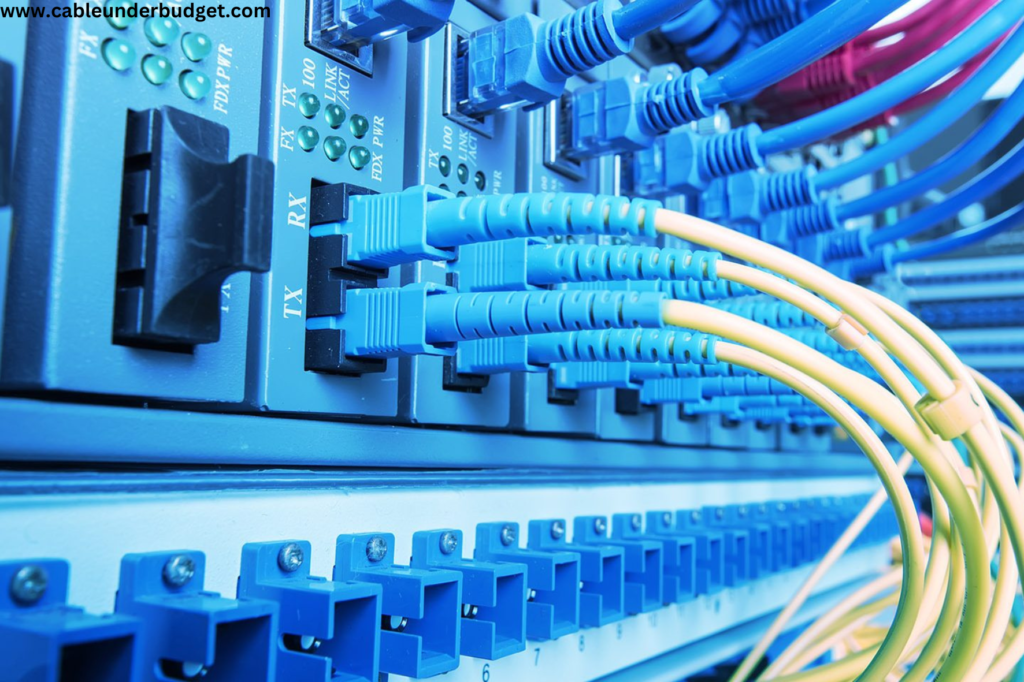Contents
Introduction:
Who to run Ethernet cable through walls is a big question. In the fast-paced digital age, a robust and reliable internet connection is more important. Whether you’re a tech enthusiast or a professional requiring seamless online connectivity, running Ethernet cables through walls is a skill that can significantly enhance your network performance.
Our guide aims to provide you with detailed insights and step-by-step instructions, ensuring you can effortlessly achieve this task.
Assessing the Scope
Before going into the detail of running Ethernet cables, it’s crucial to assess the scope of your project.
Determine the distance the cable needs to cover,
the number of connection points,
and the specific areas of your home or office where you require a hardwired connection.
Gathering Materials
To embark on this journey, gather the necessary materials:
Ethernet Cable:
Select a high-quality, Cat6 or Cat6a Ethernet cable for optimal data transmission speeds. These cables offer superior performance and are well-suited for modern networking needs.
Wall Plates and Connectors:
Invest in quality Ethernet wall plates and connectors to ensure a neat and professional installation. These components not only enhance aesthetics but also contribute to the longevity of your network setup.
Fish Tape or Wire Pull Rods
To navigate through walls with precision, equip yourself with a fish tape or wire pull rods. This will facilitate the smooth passage of the Ethernet cable without causing damage to your walls.
Power Drill and Bits
A reliable power drill with appropriate bits is essential for creating holes in the walls. This step requires precision, so ensure your drill is up to the task.
How Hard Is It To Run Ethernet Cable via Walls?
Running Ethernet cable through walls might seem like a daunting task, but with the right guidance and tools, it can be a manageable and rewarding project. The difficulty level largely depends on factors such as the construction of your walls, the distance the cable needs to cover, and your familiarity with the process. Let’s delve into the key considerations to help you assess the complexity of this endeavor.
Wall Construction:
The difficulty depends on the wall type; drywall is easier, while brick or concrete may require specialized tools and skills.
Access Points and Obstacles:
Planning the route around obstacles like wiring or plumbing, and identifying accessible points, simplifies the process.
Tools and Equipment:
Having the right tools, including a power drill, fish tape, and connectors, significantly impacts the ease of the project.
Skill Level:
Familiarity with DIY projects and basic wiring enhances accessibility; novices should research thoroughly and proceed cautiously.
Time Commitment:
Running Ethernet cables requires careful planning, precise execution, and thorough testing, making it a project that should not be rushed.

How to run ethernet cable through walls? Installation process
Step 1: Planning the Route
Identify the path through which the Ethernet cable will run. Consider existing structures, such as studs and insulation, to determine the most efficient route.
Step 2: Drilling Access Holes
Using your power drill, carefully create access holes at strategic points along the planned route. Exercise caution to avoid any electrical wiring or plumbing within the walls.
Step 3: Thread the Fish Tape
Attach the Ethernet cable to the fish tape or wire pull rods. Gently thread it through the access holes, guiding it along the pre-determined path.
Step 4: Connectors and Wall Plates
As the cable emerges at its destination, affix connectors and wall plates to both ends. This ensures a secure and professional-looking connection point.
Step 5: Testing and Troubleshooting
Before sealing the access holes, conduct thorough testing to ensure a seamless connection. Troubleshoot any issues promptly to guarantee optimal performance.

Benefits of running ethernet cable through walls
In a world dominated by wireless technology, you might wonder about the benefits of running Ethernet cables through walls. Let’s explore:
Enhanced Stability and Speed
Hardwired connections offer unparalleled stability and speed compared to wireless alternatives. This is crucial for activities like online gaming, video conferencing, and large file transfers.
Minimized Interference
Ethernet cables are less susceptible to interference from other electronic devices, ensuring a consistent and reliable connection.
Future-Proofing Your Network
Investing in a hardwired network setup future-proofs your infrastructure, accommodating the increasing demands of evolving technology.
Conclusion:
In conclusion, running Ethernet cables through walls is a valuable skill that can significantly improve your network’s performance and reliability. By following our comprehensive guide, you’ll navigate the intricacies of installation with ease, ensuring a robust connection for all your digital needs.

